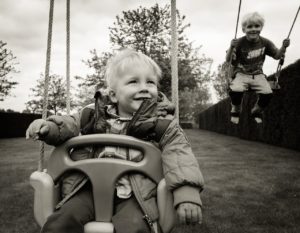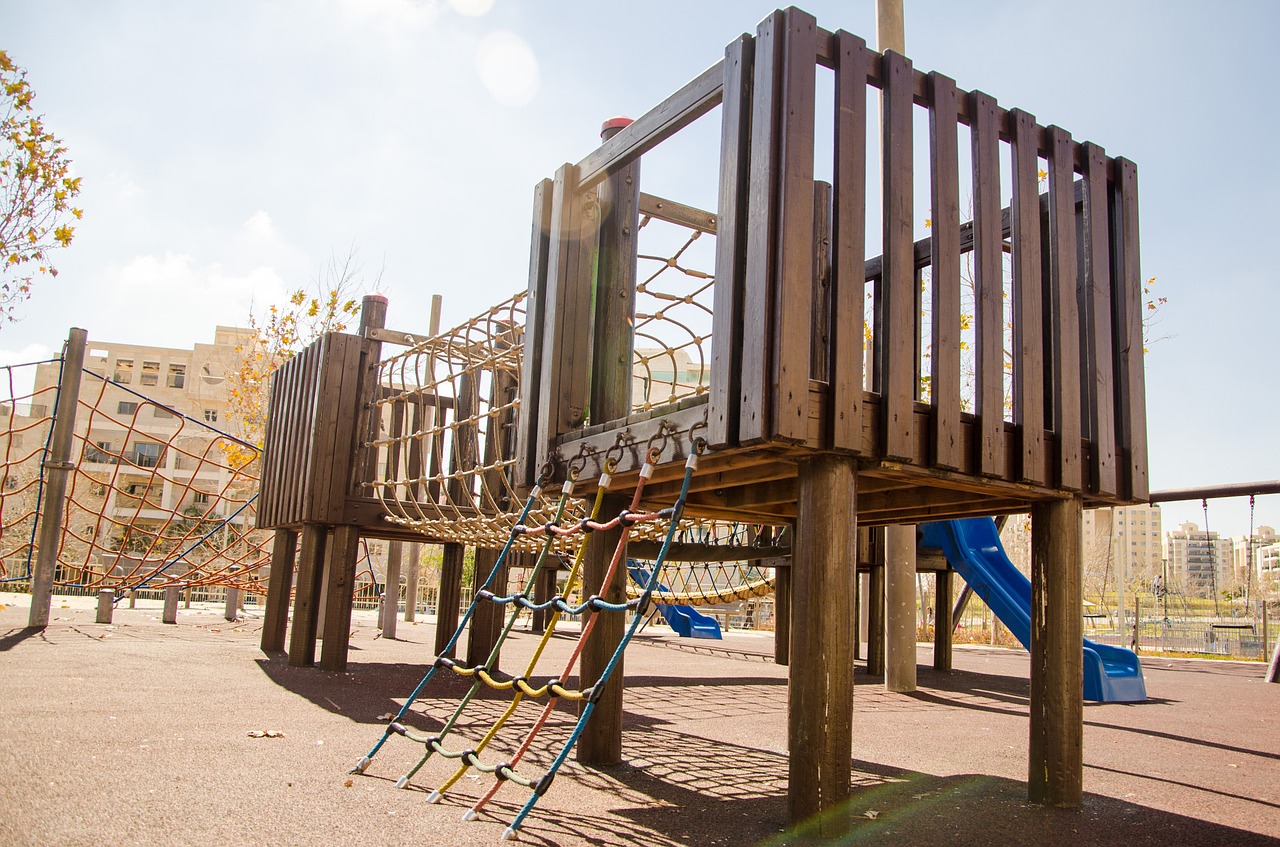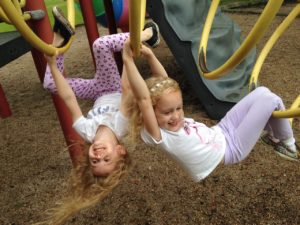The Importance of Playground Play
by Jeanette Mangano, DPT
Kids Place West Pediatric Physical Therapist
The playground is an exciting place for most children that is crucial to the development of social, fine motor, and gross motor skills. In addition to promoting an active lifestyle, children will also learn and develop many skills needed to be successful. Playground equipment often targets strengthening, balance, motor planning, endurance and vestibular functioning while engaging children to socialize with their peers. Here are some of the common equipment found at a playground and why it is important to encourage participation from your child:
Uneven surfaces
Playgrounds have a variety of surfaces – gravel, grass, rubberized surfaces, and mulch, to name a few. These safe surfaces give children an opportunity to interact with and work on balance/transitions between different types of surfaces and heights. It will also improve their ability to develop tolerance to different surface types. Lastly, uneven surfaces will create awareness of where their body is in space (proprioception) by using information received from receptors in their joints, not their vision.
Swings
Swings can be used for a varie ty of functions. It works on core strength and postural control. It also helps coordination and vestibular input as your child propels through the air pumping their legs. When a child pumps their legs, they need to coordinate bending and straightening their knees as they extend and flex at their trunk and elbows to create momentum at the appropriate times to have them swing without external assistance. The back and forth movement of the swing are great for muscle control and balance, as well.
ty of functions. It works on core strength and postural control. It also helps coordination and vestibular input as your child propels through the air pumping their legs. When a child pumps their legs, they need to coordinate bending and straightening their knees as they extend and flex at their trunk and elbows to create momentum at the appropriate times to have them swing without external assistance. The back and forth movement of the swing are great for muscle control and balance, as well.
Ladders/Climbing apparatus
These pieces of equipment work on motor planning and strength. They require children to assess the piece of the equipment and figure out how to appropriately move their body in order to climb while maintaining balance. Your child will learn to use their body’s ability to know where each joint is located in space and how to move each part of the body to get up, down, or across the piece of equipment.
Suspension Bridges/ Moving Surfaces
Moving surfaces target our vestibular system and proprioceptive skills for balance. Because the surface is unstable, we rely on information from receptors in our joints to be able to make the appropriate muscular reactions in order to maintain balance while standing or walking across the surface.
Slides use our trunk and core muscles in order to remain upright while going against the momentum that is pushing us backwards. Sliding down, we are unable to correctly identify the position of our body from visual input and therefore rely more heavily on the vestibular system to give information about where our head is in space.
“Monkey bars”/Overhead apparatus
Overhead climbing and hanging work on core, back, and upper body strength while also working on coordination in order to move the body though the piece of equipment.
Often children who struggle at the playground have underlying vestibular, strength, motor planning, or body regulation impairments that can be addressed through therapy, but it may not be clear why they avoid or dislike certain pieces of equipment at the playground. If you have any questions, or feel your child may benefit from an evaluation, please contact Kids Place!









